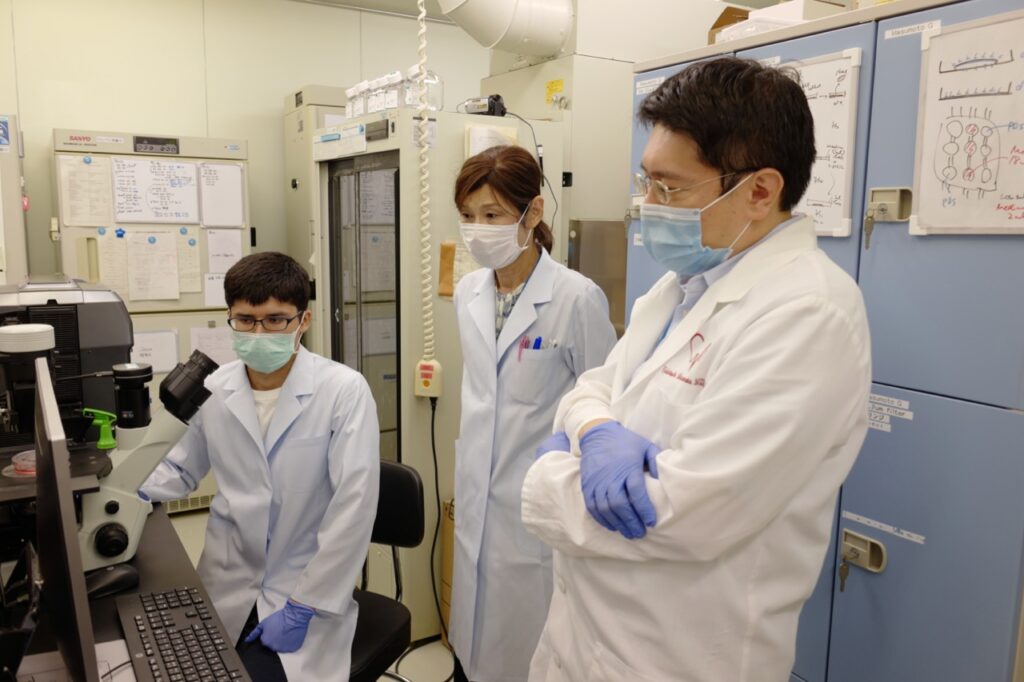Clinical Translational Research Program
Translational research is an interdisciplinary branch of research that generally refers to applying findings from basic scientific research to clinical settings. The BDR’s Clinical Translational Research Program aims to merge clinical demands with cutting-edge basic research. Two researchers with clinical knowledge and experience are leading respective teams under this program with the goal of advancing our understanding of diseases as well as developing applications for regenerative medicine. We will introduce these two labs here.
Hematopoietic Stem Cell Research –
Miyanishi Lab
How many members are in the laboratory?
Senior scientist Masanori Miyanishi (left in the top image), who is the research leader, two graduate students, two technical staff and two visiting scientists.
What kind of research is the laboratory conducting?
We are involved in a wide range of research from basic to applied research to understand the biological characteristics of hematopoietic stem cells (HSCs), which produce all blood cell types in the body, and maximize their potential for uses in clinical settings.
What is remarkably unique about the laboratory?
We have established the world’s best method for identifying, purifying and analyzing HSCs, which are surprisingly scarce with only one found among 100,000 blood cells, with high reproducibility. We also have expertise in functional screening to identify genes involved in homeostasis of the hematopoietic system.
What is important to keep in mind in clinical translational research?
It is important to determine the best direction for research and development by accurately understanding the needs of the clinical field and the patients. We are working in collaboration with many different researchers with the desire to deliver new technology to the clinical field as quickly as possible.
What are the advantages of doing clinical translational research at BDR?
The research instruments and facilities and technical support available are outstanding. Being located in the Kobe Biomedical Innovation Cluster facilitates networking and collaborations with people working in nearby hospitals.
iPSC-based Cardiovascular Medical Research – Masumoto Lab
How many members are in the laboratory?
Senior scientist Hidetoshi Masumoto (right in the above image), who is the research leader, one visiting scientist, one technical staff and one student trainee.
What kind of research is the laboratory conducting?
We are striving to generate heart tissue from induced pluripotent stem cells (iPSCs) and replicate the function of the heart in a culture system for uses in regenerative medicine and drug discovery research with the goal to create new medical treatments.
What is remarkably unique about the laboratory?
We have established techniques for generating the different types of cells that comprise the heart from human iPSCs, and have also integrated these techniques with cell engineering technology to generate 3D artificial tissues. We will carry out original research for regenerative medicine and drug discovery applications using these technologies.
What is important to keep in mind in clinical translational research?
For example, being able to transplant a heart generated by iPSCs would be the ultimate goal of basic research, but this is still expected to take a long time to achieve. Besides pursuing basic research, it is therefore necessary to determine which research and developments made so far can be used clinically, and to make an effort to bring these benefits to the clinic.
What are the advantages of doing clinical translational research at BDR?
There are researchers working in various research fields at BDR, and it is easy to engage with them in collaborative research.

